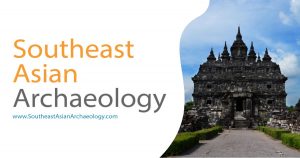Highlighting a bunch of papers (five, at current count) published this month in the Journal of Community Archaeology & Heritage for a special issue on Current Archaeological Practice in Southeast Asia: Collaboration, Engagement, and Community Involvement in Field Research. The articles cover examples from Cambodia, Thailand, Philippines and Malaysia. Don’t forget, while articles are usually behind a paywall. most authors are happy to share a copy if you email them and ask nicely
- Current Archaeological practice in Southeast Asia: Collaboration, engagement, and community involvement in field research in Southeast Asia
Stephen Acabado
Archaeological practice in Southeast Asia has recently shifted to active engagement with local stakeholders. This is due to the realization that involving communities results in meaningful research outcomes. A growing number of investigations are actively seeking the involvement of communities as both contributors and as active and involved research participants. These undertakings humanize our community partners and counter the exclusivity often associated with scholarly authority. An increasing number of scholars approach research as inter-disciplinary, breaking state and ethnic boundaries and engaging communities, emphasizing that we no longer work alone.
This special issue of the Journal of Community Archaeology and Heritage provides examples of this trend. It is predicated on the concepts of practice and agency and their impacts on cultural heritage in Southeast Asia. As every article in this issue focuses on communities drastically transformed by colonialism, we hope it will illustrate how archaeological and heritage scholars can empower indigenous and descendant communities through heritage conservation. - Heritage management, education, and community involvement in Thailand: A central Thai community case
Thanik Lertcharnrit and Nannabhat Niyomsap
This paper presents a case study of a long-term collaboration between academic scholars and a cohort of local community agents and personnel in the management of an archaeological site in central Thailand. There is a brief historical background of cultural heritage preservation in Thailand, including various aspects of collaborative approaches for cultural heritage management. We discuss and summarize background, reasons, context for collaboration, methodology (types and methods of collaboration), collaborator typology, problems and obstacles, and suggestions for best practices in cultural heritage preservation. This paper also discusses public education and the awareness of cultural heritage significance in protecting and preserving archaeological sites as national and local cultural properties. - De-exoticizing Cambodia’s archaeology through community engagement
Heng Piphal, Phon Kaseka and Heng Sophady
French colonizers introduced archaeology to Cambodia with the emphasis on the restoration of Angkor monuments. The Cambodian public’s perception of archaeology as a field of the exotic, populated exclusively with international researchers, is fuelled by misconceptions of the discipline. Public awareness is hindered by the lack of heritage education outreach and human resources, and the excessive focus on Angkor. In this paper we argue that the recent increase in the visibility of archaeology through its expansion beyond the Angkor region, public outreach efforts, the rise of social media, and dedicated community engagement has helped de-exoticize Cambodian archaeology and make it meaningful to communities beyond other archaeologists, looters, or hired labourers for international research. Community members participating in archaeological research can serve as valuable mediators who convey the objectives of archaeological research and its raisons d’être to their communities as part of the process. - Community archaeology in Sia Boey Integrated Management Plan, Malaysia
Ang Ming Chee, Charlotte Papillaud Looram and Virajitha Chimalapati
To the Penang people, Sia Boey is a place of many memories and cultural significance, it is also part of KOMTAR development project that symbolizes modernization and urbanization. This article elaborates the historical background, controversies, potential, and challenges at Sia Boey, and the approaches taken in safeguarding Sia Boey’s cultural heritage. We present George Town World Heritage Incorporated’s Integrated Site Management Plan, which aims to ensure the coexistence of development and heritage conservation. We also emphasize the role of the Sia Boey Contemporary Archaeology Project, within this management plan as part of our continuous efforts to empower and engage the former Sia Boey community. - Collaboration, engagement, and Cambodia: Archaeological perspectives on cultural heritage
Miriam T. Stark
Community archaeology remains rare in Southeast Asian archaeology, where most archaeological engagement takes place within archaeological heritage management contexts. What should community archaeology look like in countries whose majority populations trace their ancestry directly back to monuments which generate huge revenues and whose archaeological records are under threat through development and looting? This article introduces Cambodian archaeological heritage management and its relationships to cultural tourism and economic development. Understanding Cambodian heritage management requires familiarity with UNESCO World Heritage designations which drive many developments in the country. Two primary areas of concern for both community archaeology and more top-down approaches are: (1) the challenges of working between multiple and competing stakeholder agendas, in which local community voices are rarely heard; and (2) the impact of specific management decisions on local communities. Case studies from across the region offer examples of solutions to these seemingly intractable obstacles.

























